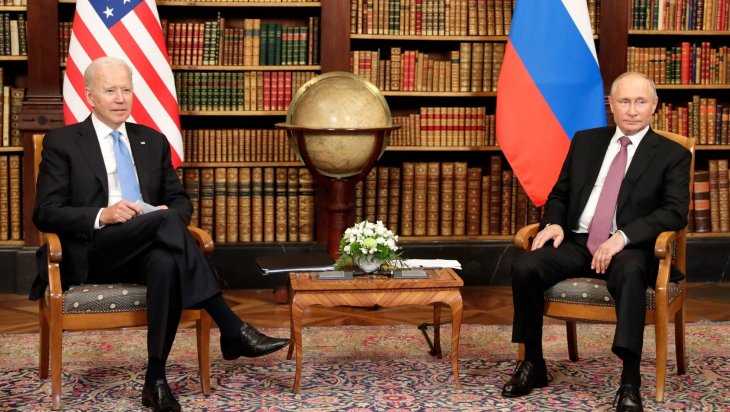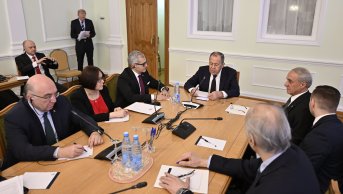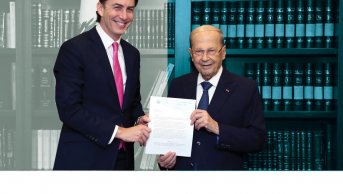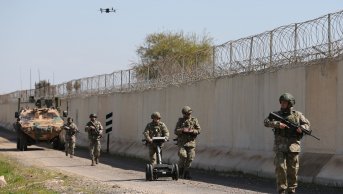US-Russia Rapprochement in Syria

Seeking to reposition itself in the global power struggle, the US is reviewing its foreign policy priorities. In this context, while the Asia-Pacific region has come to the fore in the US foreign policy, the Middle East has gradually begun to fall into the background. The most concrete examples of this change in the US foreign policy are Washington's decision to withdraw its military presence from Afghanistan, followed by the agreement with the Baghdad administration to pull US combat troops from Iraq. Since the Arab uprisings, the US foreign policy in the Middle East has become more "passive" compared to previous periods, and the US has begun to lose ground in the Middle East accordingly. Uncertainties regarding the policies of the White House toward the crises in Libya, Yemen, and most importantly Syria, as well as the relatively ineffective strategies for the resolution of these crises, have raised questions about the Washington administration’s power in the Middle East. Although whether this change in the US foreign policy is a choice or a necessity is open to debate, it can be said the US image in the Middle East has been shaken considerably and some regional powers, especially Russia, are trying to capitalize on the situation. At this point, Russia tries to turn the weakening role of the US in the decade-old Syrian crisis into an advantage with highly effective methods, and local elements, as well as regional powers, begin to question the US presence in Syria. The ongoing process in Syria cannot be discussed separately from the discussions about US presence in Syria and the recent US-Russia rapprochement.
Attempts to withdraw American troops from Syria accelerated after Former US President Donald Trump declared on 19 December 2018 that the war against ISIS was over. Amid the Operation Peace Spring launched by Turkey in October 2019 in the east of the Euphrates, these initiatives of Trump began to turn into concrete steps as he pulled 50 US troops from the Turkish border. However, Democrats in the Senate as well as some Republicans were highly critical of Trump's decision at the time, who highlighted that ISIS was not completely destroyed and the SDF was left alone. In response to the backlash, Trump approved a military mission to protect the oil fields in the east of Syria, signaling that a certain number of US troops would stay in Syria to secure the oil. Indeed, in a speech in the state of Wisconsin in January 2020, Trump explained his decision to retain US troops in Syria by saying, "People said to me, 'Why are you staying in Syria'. Because I kept the oil." Saying what the US did in Syria should have also been done in Iraq, Trump defined military interventions without economic benefits to the US as a burden and tried to build a Middle East policy on pragmatic foundations that could yield results in the short term.
Although Trump was heavily criticized by the Democrats for his policy toward the Middle East, and especially Syria, no significant change was made in the Syria policy after Joe Biden took office as the US President. In other words, the Biden administration, which took concrete steps to withdraw American troops from the Middle East, followed a policy parallel to what Trump described in his rhetoric. While the US military presence in the Middle East, especially in Afghanistan and Iraq, is decreasing, the fact that this has not yet been the case in Syria does not mean Syria might be an exception. Although the American troops in Syria continue to stay in the region, the US sphere of influence there is shrinking. Moreover, there have been many developments against the possibility of a permanent US presence.
By sharing some of its responsibilities in Syria with Russia, the Washington administration has taken some steps to pursue a common path for the two countries. The Biden administration, in a way, invalidated the illegal oil deal between the US oil company Delta Crescent Energy and the SDF signed during the Trump era, by ending the waivers for the company. This unlawful waiver previously granted to the oil company was one of the issues that worried the Russian administration the most. Taking a step back, the White House found a common ground with Moscow on Syria. Another important development for the US-Russia rapprochement in Syria was the compromise resolution at the UNSC to keep open for another year the Bab al-Hawa border-crossing, where UN aid is delivered to civilians in the region, especially Idlib, which was welcome by the diplomats of both countries.
It can be said that the joint decision-making mechanisms between Washington and Moscow on Syria gained momentum especially after the leaders of the two countries met in Geneva on 16 June 2021. The meeting on Syria held in Rome on 28 June under the chairmanship of US Secretary of State Antony Blinken further enhanced the US-Russia rapprochement. Brett McGurk, the Middle East Coordinator of the US National Security Council, met in Geneva with Putin's Special Envoy for Syria, Alexander Lavrentiev, who had just returned from Damascus, to overcome the technical issues regarding Syria. After the meeting, the US toned down its rhetoric against the regime, and even added on 28 July 2021 the members of some groups such as Ahrar al-Sharqiya and HTS to its list of sanctions, in addition to names close to the regime. This strengthened the claims that the US-supported negotiations between the Kurds and the regime, as well as the talks between the SDF and the Syrian Kurdish National Council.
It would be incorrect to say that the US-Russia rapprochement is progressing independently of the YPG and the situation in the east of the Euphrates. The fact that the two powers can find a common ground on some issues mostly serves the interests of the YPG in the region. The YPG, strongest US local ally, also has long-standing and good relations with Russia. The rapprochement between the two countries is extremely critical for YPG's aspirations for autonomy in Syria. Therefore, with the US approval, the groundwork is being laid for the YPG and Russia to come to terms. This situation can be read as a US strategy to guarantee the future of its local ally, YPG, against the possibility that the US withdraw from Syria, as it did first in Afghanistan and then partially in Iraq. Evaluating the possibility of a US pullout from Syria, Lavrentiev told the Russian news agency TASS on 9 July 2021 that the US is in Syria to fight against ISIS and it may withdraw at any time. He said the complete withdrawal of the US from Syria would strengthen the dialogue between the SDF and the Damascus administration and that a joint solution may be reached between the parties accordingly.
The fact that Lavrentiev made these remarks following the talks in Rome and Geneva, held after the Biden-Putin summit, strengthens the possibility that these statements are not baseless. It should be noted that the aforementioned diplomatic initiatives in Syria are closely related in that they came right after the US decision to withdraw from Afghanistan and that a similar process is taking place in Iraq. Indeed, it is not surprising that the US, which is in the process of gradually shifting its troops in the Middle East towards the Asia Pacific, had similar initiatives regarding Syria. What is surprising, however, is that the US is likely to enter the withdrawal process by leaving its gains to Russia's initiative, rather than restoring its deteriorated bilateral relations with its NATO ally Turkey.










